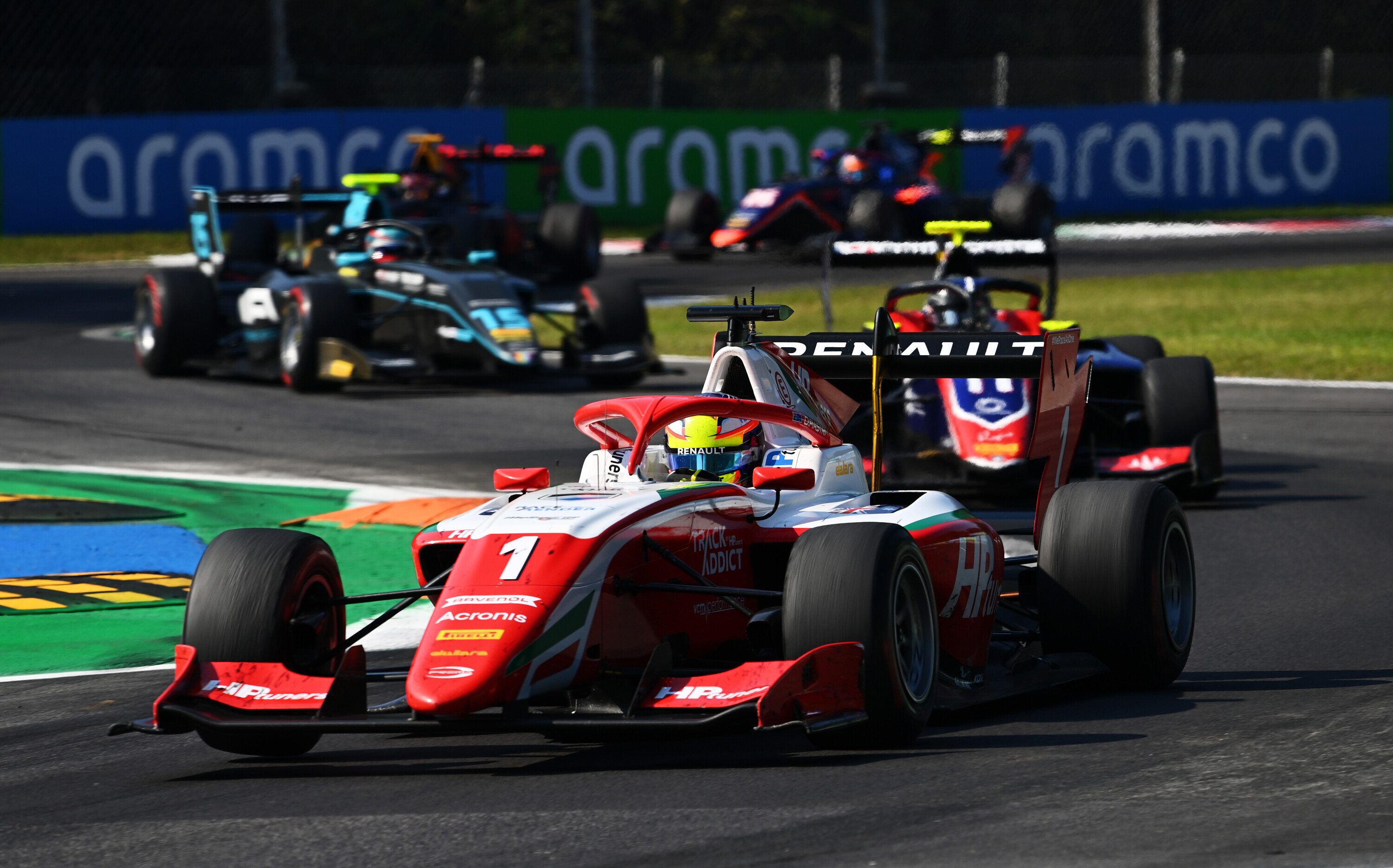FOR a car that kicked off its segment in the ’70s, defined the decade of excess that followed, then matured respectfully with the sober ’90s while still being able to push the envelope right out with the otherworldly M3, the BMW 3 Series has lately been stuck in a rut while copycat rivals have risen.
Most pundits agree that the Bavarians lost their way around the mid-2000s, when the patchy E90 fell short of its now-fabled E46 predecessor. And though much improved, the F30 successor of 2012 couldn’t hit the old heights.
Is the reign of the 3 Series over for good?
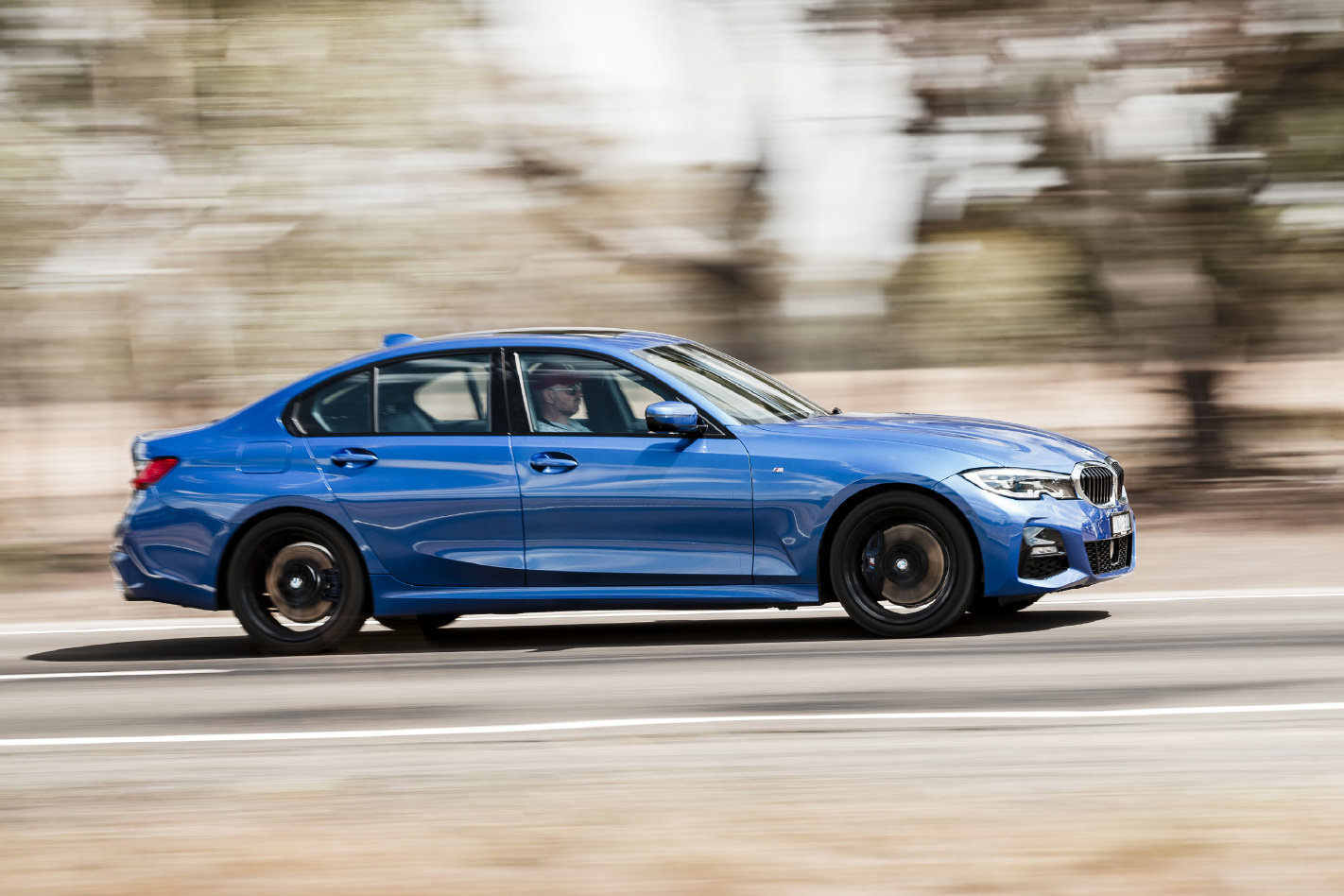
Not if Munich has its way. Pulling out all stops, the all-new G20 migrates to the marque’s ‘Cluster Architecture’ underpinning every other longitudinal engined/rear-drive-based BMW (and Toyota’s Supra).
Result? The 3 is significantly stronger, slipperier and bigger, with a corresponding wheelbase and track stretch to help improve proportions as well as dynamic prowess. Yet it’s lighter too.
Fresh yet familiar, Lexus ought to feel complimented by some of the handsome German’s more intricate detailing. And terrified by how emphatically changed new is from old. All of the BMW’s competitors should be.
Time, then, for the seventh-gen 3 Series to meet its fiercest rivals, so we’ve selected the predicted popularity-queen 330i M Sport to take on the refined Audi A4 45 TFSI quattro, dynamic Jaguar XE 300 Sport and bestselling Mercedes-Benz C300.
Once, a ‘3’ in a badge usually denoted a 3.0-litre atmo six. Not now, though. To slash emissions, all combatants boast 2.0-litre four-pot petrol turbos, with just 14ccs between them, sub-six second 0-100km/h claims and circa-6.5L/100km combined averages.
Here are more numbers: $70,900 – the price of the latest 330i. The same as before, but with heaps more gear to go with the boosted oomph from its 190kW/400Nm heart. Leather, adaptive LED headlights with auto high beams, sat-nav, digital radio, digital instrumentation with head-up display, surround-view camera, three-zone climate control, wireless smartphone charging, powered front seats with memory, keyless entry/start, adaptive cruise, AEB, lane departure warning, lane-keep with steering assistance, blind-spot monitor, front and rear cross-traffic alert, speed limit recognition, park assist, powered boot lid, 19-inch alloys. Loaded.
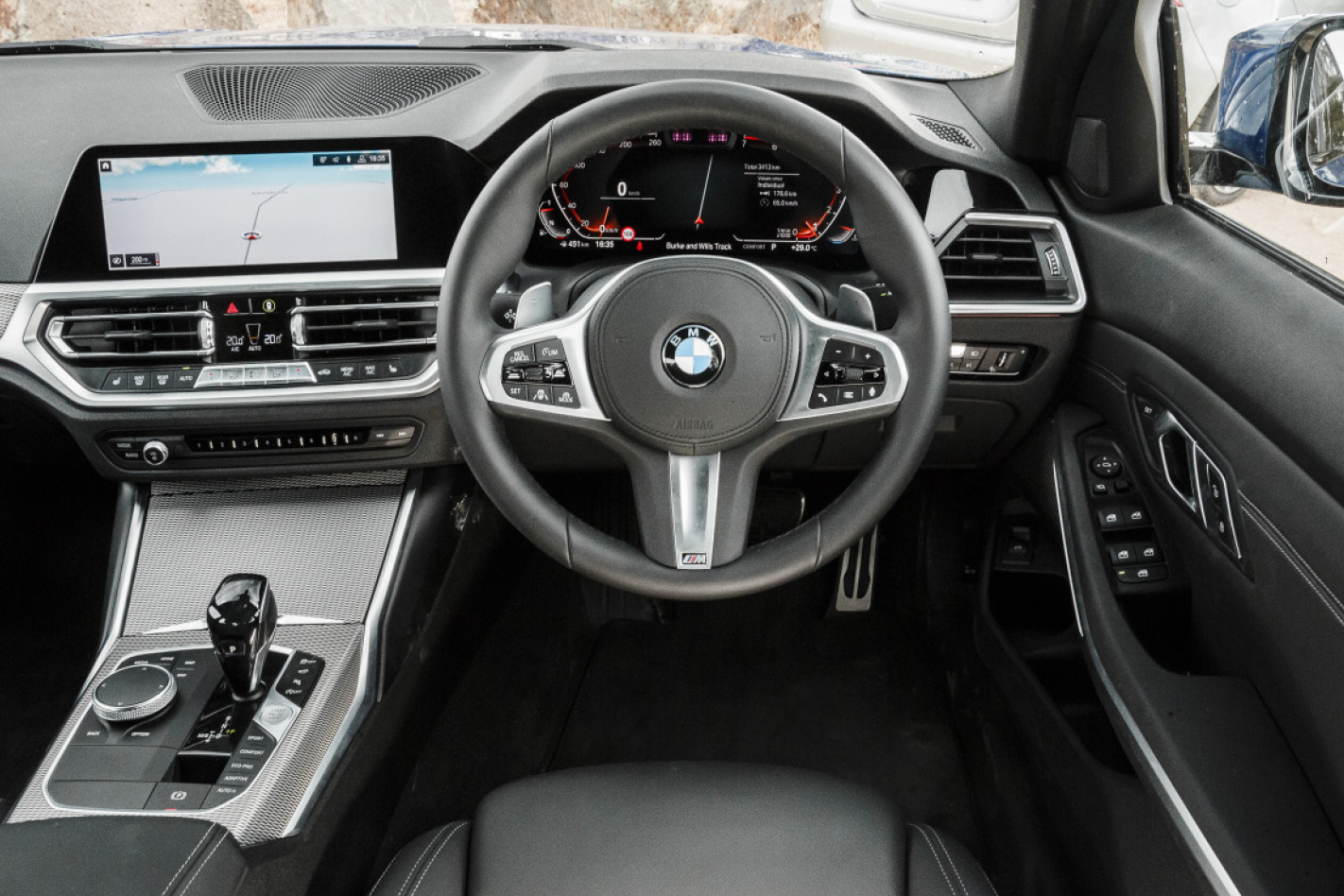
Being an M Sport also brings 10mm-lower sports suspension, adaptive dampers, beefier brakes, a bodykit, racier trim, chunkier steering wheel and moodier cabin materials. Still, metallic is a $2K gouge, while the sunroof, M Sport differential and other options bumped up our 330i to $80,100.
Is BMW’s newfound value spec enough to catch the C-Class?
The five-year-old W205 might be a segment favourite, but it hasn’t been a winner in our pages like the preceding (and COTY-winning) version from 2007. We’re keen to see if the Series II facelift out last September can remedy that.
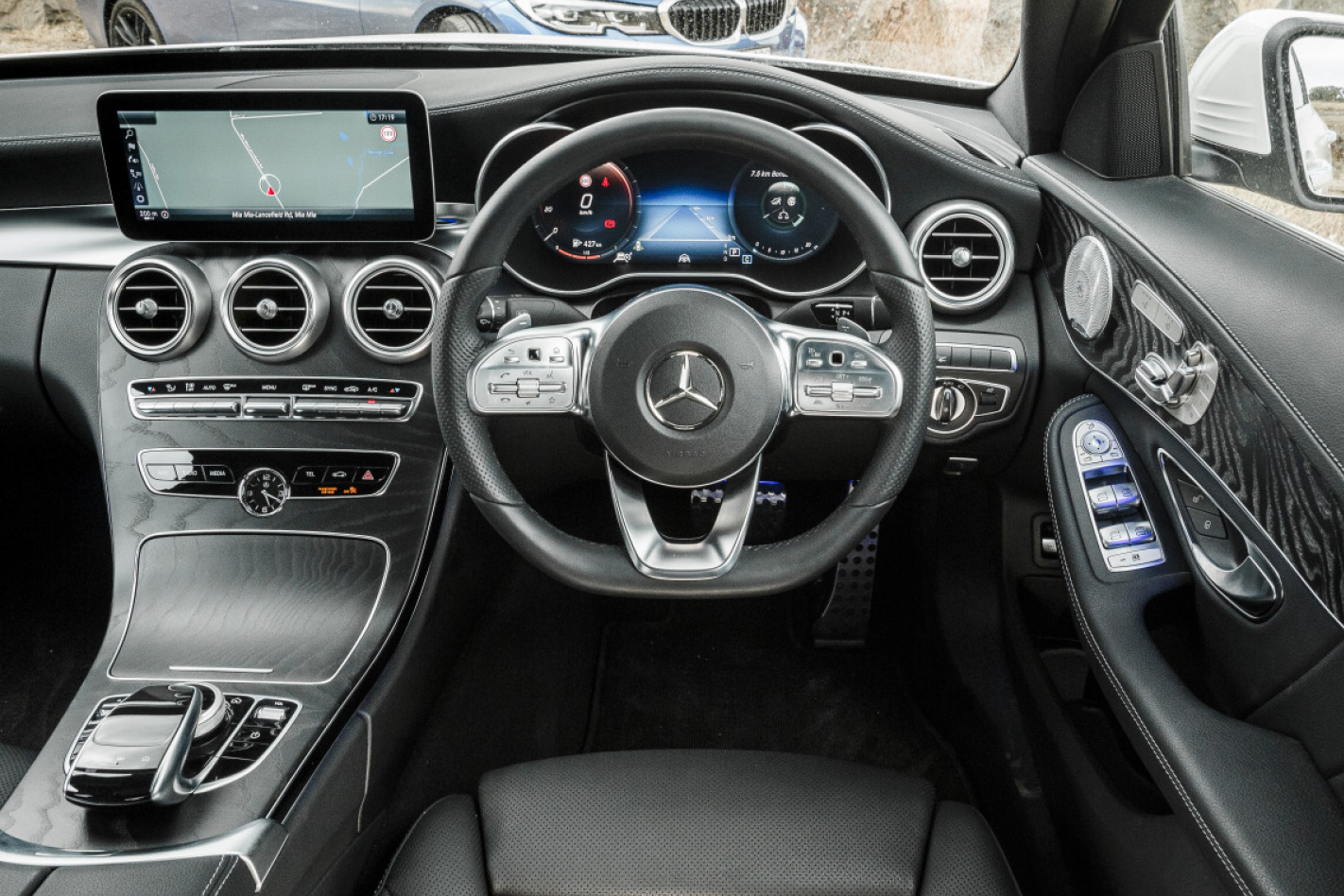
With a new nosecone, alloys, lighting elements and not much else, most of the advances have occurred under the South African-assembled Benz’s skin, with an overhauled electronic architecture resulting in updated multimedia systems, revised digital instrumentation and upgraded driver-assist tech nicked from the E-Class representing the headline mods. The C300’s outputs rise by 10kW to 190kW/370Nm too. However, adaptive dampers, leather, wireless charging and a few other niceties remain optional, and – together with a host of other items like enhanced seating, AMG Line visual titivations and Comand full multimedia packs – our Merc’s ask rockets to $100,113.
Conversely, while Audi, too, has been overly subtle altering the recent B8-series A4 makeover for 2019, this ninth-gen iteration (released in late 2015) has consistently impressed us with its value, quality, refinement and driveability. The only all-wheel-drive and dual-clutch transmission on test, the $70,300 45 TFSI S tronic quattro nevertheless undercuts the BMW by $600, but falls slightly short on power (185kW) and torque (370Nm). Plus, it requires a $2470 Assistance pack to match its compatriots in the driver-assist tech department and a $1300 S line Sport upgrade for more athletic aesthetics inside and out. Other 330i-equalling items like a head-up display and audio upgrade must be bundled in a $5600 Technik pack; likewise, the 360-degree camera and auto park features add $1235. These, along with similar options found on the BMW, raise the Ingolstadt sedan’s price to $89,680.
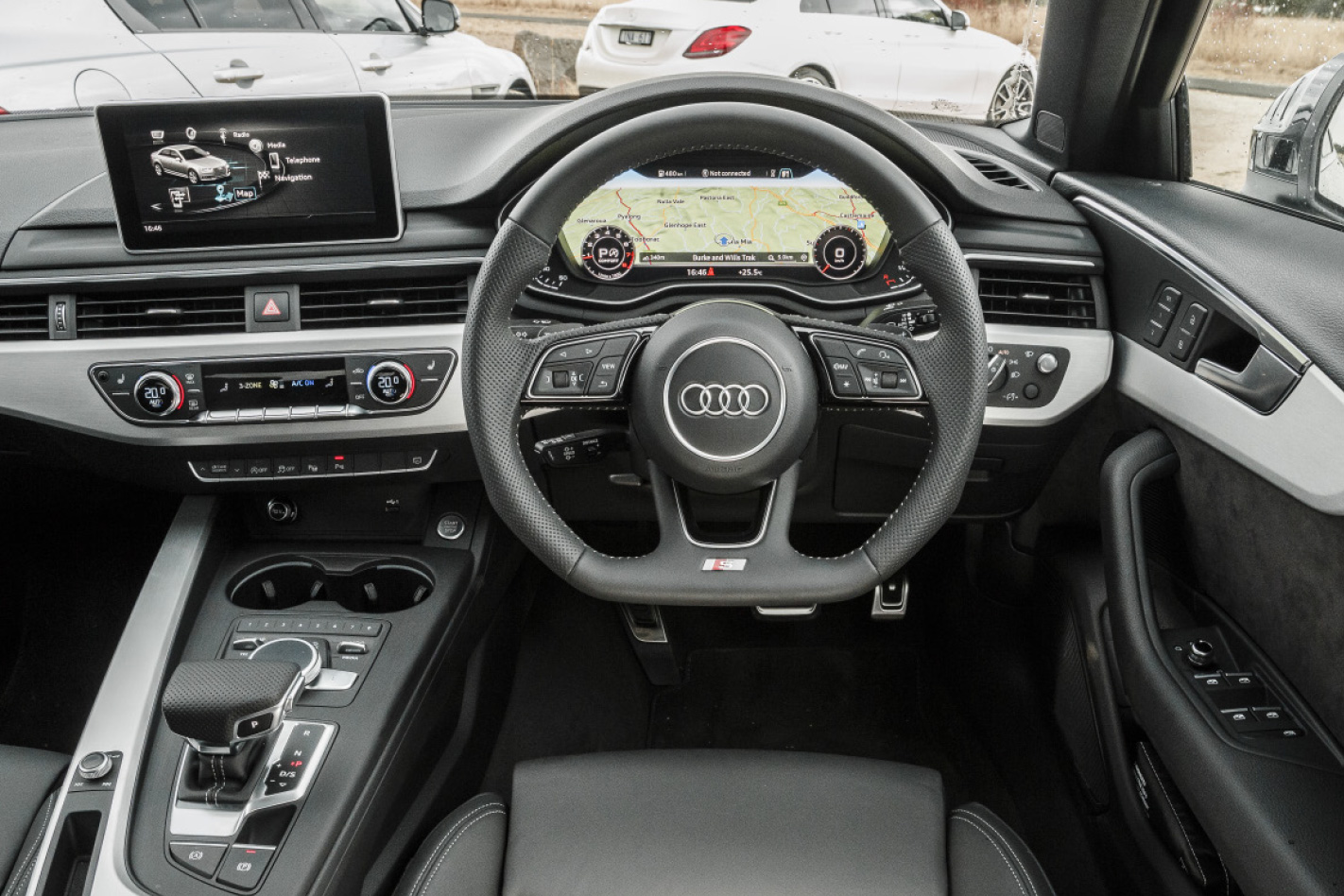
Finally, the XE. Perhaps one day historians will look back at the British mid-sizer as one of the unsung greats of the 2010s, finishing at or near the top of many road tests but rarely on top of customers’ to-test-drive lists.
Surfacing in mid-2015, the existing version has undergone steady improvements since (namely all-new in-house Ingenium engines and revamped multimedia two years ago), while a thorough facelift was announced in the UK just weeks ago. Our 221kW/400Nm 300 Sport started off as the quartet’s most expensive at $79,400, and still required $8K’s worth of options including a $3K Active Safety Pack, $2K adaptive dampers and $580 digital radio, to equal the Germans. All up, $87,650.
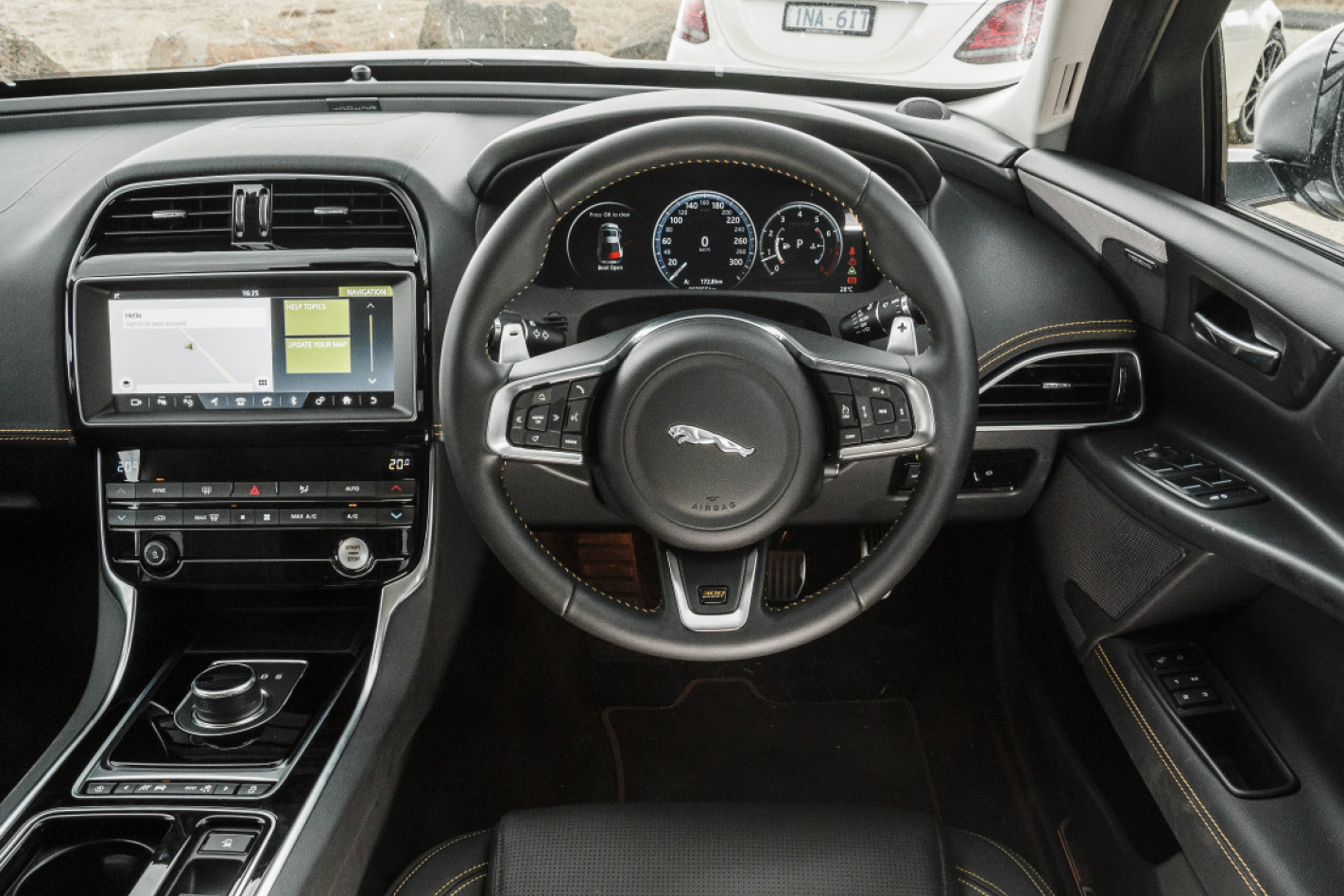
For Jaguar’s sake, fingers are crossed that the upcoming Series II cabin steps up, because in 2019 the outgoing item’s dated, heavy-handed dash seems the oldest and dourest of the foursome. Confusing switchgear, fiddly rotary transmission controller and frankly dull digitised instruments won’t convert browsers into buyers.
Yet the build quality is solid, seat comfort is superb, noise suppression is impressive and – actually – the user interface is logical once mastered. Plus, the XE’s nowhere near as tight in the back as the shallow windows and thick-set trim suggest.
The C-Class probably scores a sale the second most people sit inside it for the first time. Imposing and brash, the bulbous dash still looks expensive, with inviting (optional in our example) comfort seats and a commanding driving position aiding the Benz’s appeal. However, even years later, the messy multimedia interface, low-rent squeaky plastics and polarising column gear selector grate.
Finding serious fault in the vast, wide, spacious and exquisitely detailed A4’s cabin is a struggle, reflecting its maker’s obsession with quality, minimalism and sensory satisfaction. No surprises here – just reassuring craftsmanship that still sets the standard more than three and a half years since debuting globally. There’s a real sense of being in a 5 Series rather than a 3 Series rival, so complete is the 45 TFSI quattro’s alluringly rich interior execution. The classy class benchmark remains Ingolstadt’s greatest asset.

In M Sport trim at least, BMW really appears to have watched and learned from its compatriots. While still identifiably BMW, the G20 avoids the cookie-cutter syndrome by gently progressing design and presentation themes, introducing the latest iteration of the excellent iDrive controller, less infuriating gear lever functionality (finally!) and a very welcome step-up in material quality. Space, too, improves, with rear-seat passengers especially pampered by contoured backrests. There’s a newfound warmth and lightness of touch. Our only reservation is that BMW’s age-old analogue dials give way to a slightly fussy and endlessly configurable digital instrumentation.
Behind that resculptured snout is BMW’s most powerful production four-pot turbo ever. Matched to ZF’s brilliantly intuitive eight-speed auto, it’s marginally but consistently the strongest performer on test, providing fervid off-the-mark acceleration, especially in Sport mode.
Actually, this feels far livelier down-low than most of the classic in-line BMW sixes of yesteryear, and keeps the taps flowing well above the mid-range, nudging the 7000rpm rev max with effortless ease. If only it made the same evocative sound as the old 3.0-litres. That we averaged 9.7L/100km and six seconds flat to 100 over repeated runs in mid-30s temperatures further instilled respect.
Not that the Mercedes was far behind, almost mirroring its Munich nemesis – just 0.1s adrift in the 80-120km/h increments at just 3.7s – but never quite catching the fiery newcomer. Maybe it’s the less insulated cabin speaking, but the Benz sounded busier and buzzier than the Bimmer, so it felt at least as muscular. One thing’s for certain: subjectively, in Sport mode, the C300 takes off like a wounded wasp. Quite a rousing experience.
There’s a price to pay, however, for such rowdiness, even though the nine-speed 9G-tronic auto boasts a wide spread of ratios that promise tee-totalling parsimony – and that’s a disappointing 11.1L/100km.
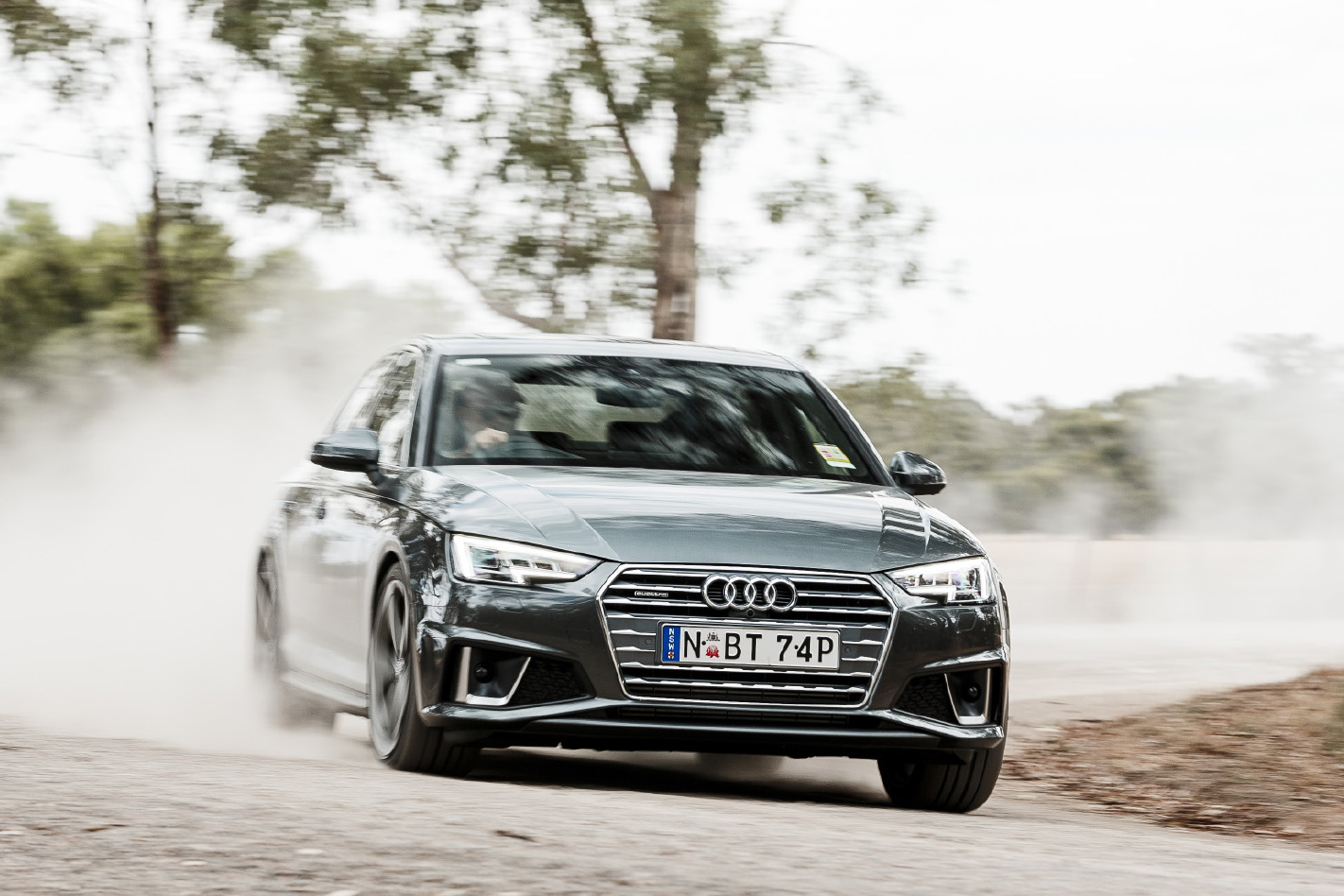
Completing the German performance domination in our sports sedan comparo, the A4 also stayed within a sniff of its countrymen, delivering brawn and might when the driver’s in the mood for some horizon-reeling pace. It seems indecently quick too, perhaps because of the low-slung, deep-windowed vistas of the scenery blurring by. The thing is, it’s also served up with grace as well, partly thanks to that planted all-paw engineering, and also due to the incredibly slick shifts from the seven-speed DCT dishing out all that torque.
Only past 120 clicks did the A4 start trailing off. Point the finger at the circa-80kg weight penalty of AWD – though the Audi more than made up for that indiscretion with pleasing economy, sipping the 98 RON brew at a remarkable 9.4L/100km.
So, the heat was really on the XE – and we mean literally, because the mercury suddenly soared above 40ºC. Combined with it being mis-fuelled with 91 RON octane, our Jaguar struggled, trailing the 330i by a 1.7s chasm to 100, and remaining comparatively lethargic against the clock. Indeed, it was a second slower than the 177kW/340Nm 25t previously tested, so things were definitely off. The worst for consumption too at 11.8L/100km.
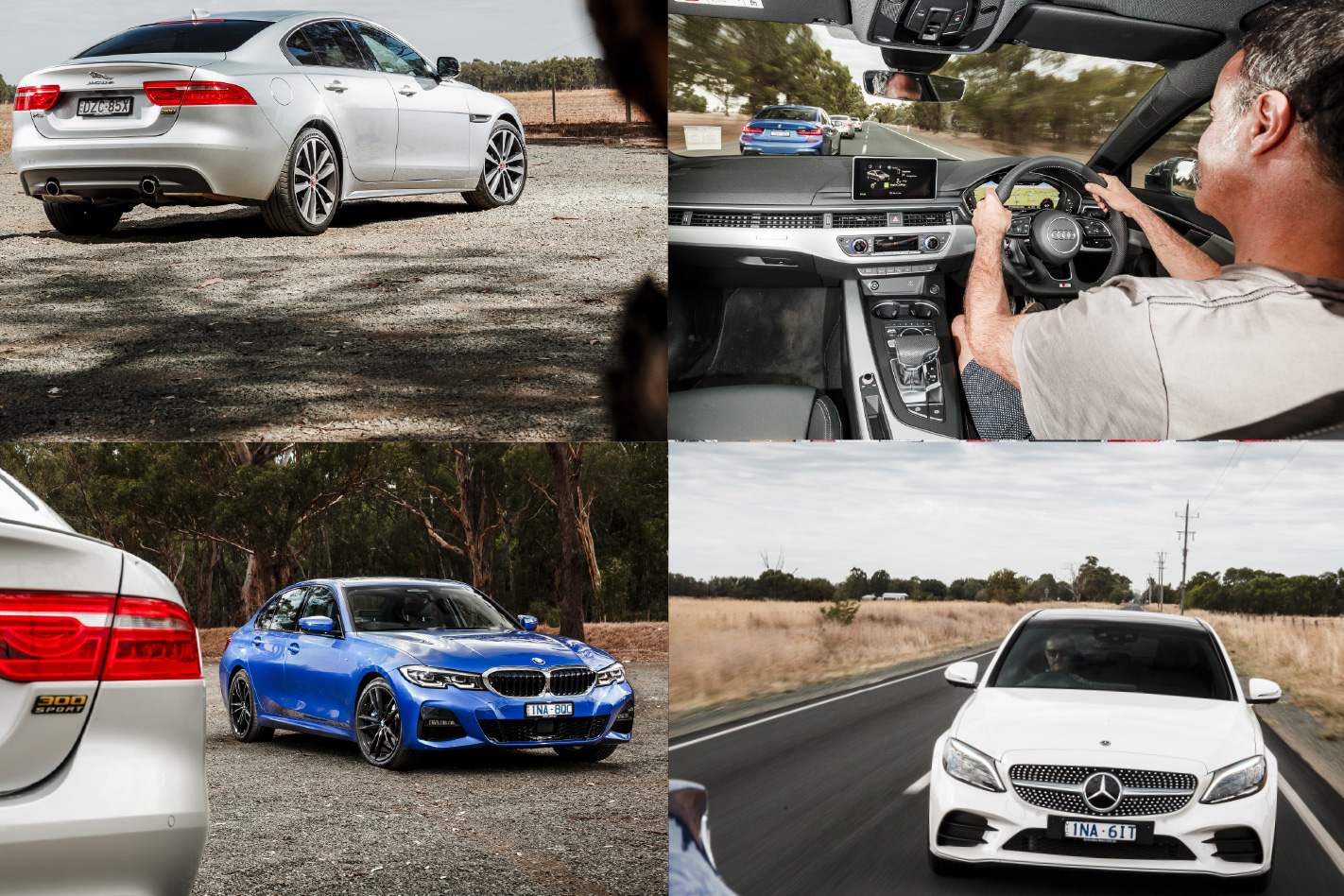
Strangely, things did improve on the road, where, in cooler conditions, the XE rediscovered its performance groove, providing robust acceleration and decidedly vigorous throttle responses.
It’s a shame, because the XE 300 Sport remains a paragon of superb dynamics, with the quartet’s most natural and immersive steering, a chassis that seems compulsively drawn to corners, urging the enthusiastic helmsperson to hustle the thing along with awesome confidence and control. Backed up by a soft, relaxing and quiet ride quality, we’re reminded why it’s one of our faves.
Yet, brandishing BMW’s adaptive M suspension with variable ratio steering, the 330i pushes the dynamic boundaries. Though not as tactile as the XE’s, the handling has an incredibly measured and fluent responsiveness that’s not too sharp, exquisitely balanced and full of feedback. Car and driver are as one, in the way that we remember the better E36s were back in the ’90s.
The extraordinary thing, though, is that the G20 feels glued to the tarmac at speeds well beyond what seems decent, revealing outstanding roadholding assurance.
There’s more too, for the BMW’s ride is – for most part – notably absorbent, only very occasionally being caught out by the odd big jagged rut. In this 330i M Sport spec at least, the 3’s dynamic leap seems two generations on from the F30. Only the roar on certain bitumen from its Bridgestones sullied an otherwise impressive return to form.
After that experience, the Audi’s steering seems a tad light, yet it’s still imbued with precision and poise that leaves the driver feeling confident. And that’s in the dry. A spell carving through fast, tight corners in torrential rain saw the AWD system elevate security to a whole new level, with the A4 impervious to the challenging conditions. The adaptive dampers also do their thing with aplomb, conveying an obviously softer set-up providing isolation from bumps yet without adversely affecting body control. Some road noise and wind rustle from the pillars are discernible, however.
The XE, meanwhile, is a lesson in agility and suppleness, offering a solid dynamic base, real driver appeal and anti-establishment desirability. Truly, there are no losers here as all four can be life-affirmingly joyful. Yet even forgiving our 300 Sport’s off-colour performance and fuel consumption, the Brit’s wrinkles are beginning to show.
And the Mercedes? Benz claims to have engineered 6500 changes for the Series II, and the results are mixed. The C300’s helm is almost perfectly realised, with crisp, reactive steering for beautifully measured handling and reassuringly planted roadholding – resulting in one of the most enjoyable sedans to punt around hard. And the way the Benz puts its power down to the road through switchback bends is a hoot. Great brakes, too – in the dry, certainly, the most effective here.
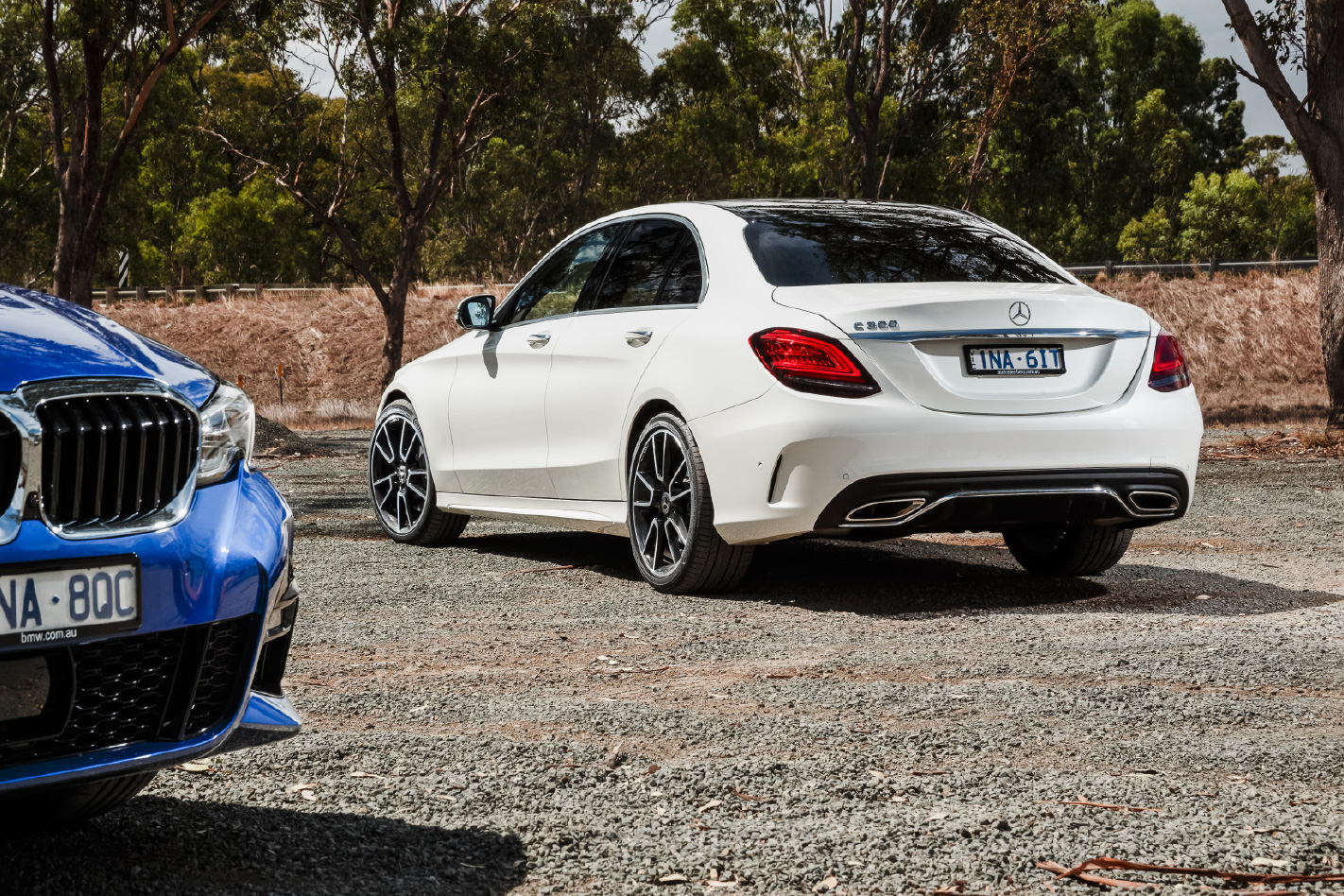
However, even with trick dampers, the ride can be unsettled, becoming fidgety and then thumpy and crashy as the surface worsens. In comfort mode, rear-seat occupants were shaken on our punishing test route to a degree unheard of in the rest.
It’s obvious the C300 is tuned to delight drivers and onlookers, but its comfort and refinement issues can’t be ignored.
The A4 simply hasn’t aged anywhere near as much because it was so progressive at launch. While the Audi may lack the charisma of the Merc and charm of the XE, the classy 45 TFSI quattro will make you feel great. It’s still so enticing.
That the 330i has leapfrogged the toweringly talented and sumptuously engineered Audi to top spot is a milestone – and not only because a win has eluded the 3 Series for years.
We’re witnessing a return to form unseen since the halcyon days of the iconic E46, as well as a true evolution of the sports sedan. The G20 is at the peak of its game and emphatic proof that BMW is back.





